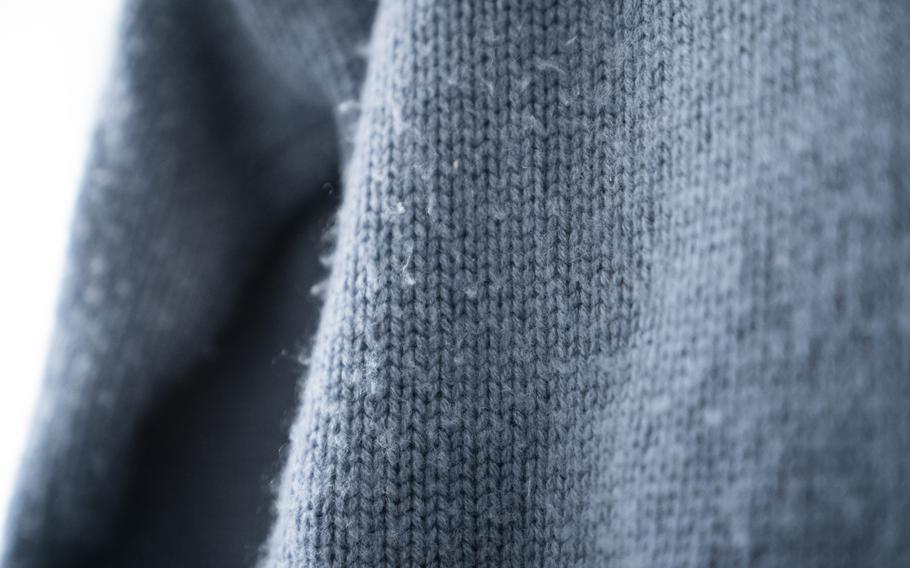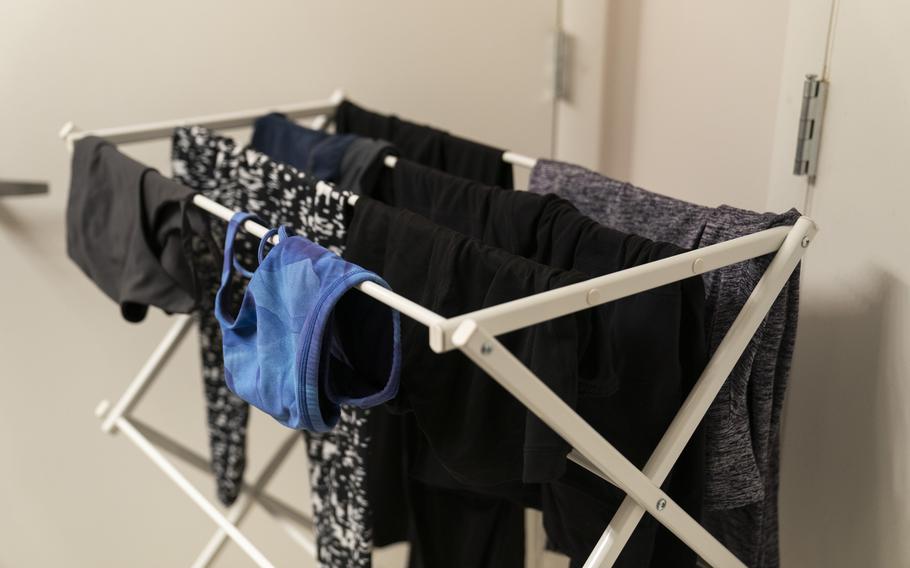
You can cut hundreds of pounds of carbon dioxide emissions a year by washing most of your loads in cold water. (Carolyn Van Houten/The Washington Post)
Doing laundry might be a tiresome chore for you, but washing and drying clothes and linens can be a nightmare for the planet.
The average American family does laundry hundreds of times each year, according to Energy Star. Beyond guzzling water and gobbling energy, using your washer and dryer can pollute waterways and the air with tiny plastic particles. It can also be harmful to your clothing, shortening the life span of your garments.
But experts say there are simple changes you can make to your laundry routine that could help lessen the environmental and climate impacts. Here’s what you need to know:

Your clothes shed tiny fibers as they churn in the washing machine and tumble around in the dryer, shortening their life span. (Carolyn Van Houten/The Washington Post)
Wash your clothes less often
Even if you have a high-efficiency washer and dryer, it’s still important to cut down on the loads of laundry you’re doing.
“Every time we put that garment in the washing machine, part of it is gone down the drain,” Cosette Joyner Martinez, an associate professor in the department of design, housing and merchandising at Oklahoma State University, previously told The Washington Post. “Then we lose another piece of it in the dryer in the lint trap, so we’re disintegrating our garments.”
As your clothes and linens churn in the washing machine and tumble around in the dryer, they’re often shedding tiny fibers — many of which are small bits of plastic from synthetic fabrics such as polyester. Washing a single load of synthetic clothes can release millions of these minuscule fibers.
Aside from noticeable odors or visible stains, when your clothes need to be laundered largely depends on how the garments are worn and the type of material. Clothes that you exercise and sweat in, for example, should be washed more frequently than the outfit you wear to work a desk job. Ask yourself if you really need to wash something after only wearing it once.
Wash your clothes in cold water
Water heating consumes about 90% of the energy it takes to operate a washing machine, according to Energy Star. Changing your washer’s temperature setting from hot to warm can cut energy use in half. Washing with cold water can reduce your energy footprint even more. By washing four out of five loads of laundry in cold water, you could cut 864 pounds of carbon dioxide emissions in a year, an amount equivalent to planting 0.37 acres of U.S. forest, according to the American Cleaning Institute.
Doing loads of laundry on cold could also help reduce potential microfiber pollution.
Other tips for how to wash include:
Trying to run your machine only when it’s full. Washers use about the same amount of energy regardless of the size of the load.
Doing normal-size loads rather than running your machine half or partially full. Some research suggests that machine-washing clothes in larger amounts of water with more agitation can increase microfiber shedding.
Using higher spin settings if your washing machine has the option, which can reduce drying time.
Laundry sheets and pods may not be as environmentally friendly as you think
While detergent pods and laundry sheets are becoming increasingly popular, a debate is raging over whether they may contribute to the growing plastic pollution problem that threatens human health and the environment.
One key ingredient in these detergent products is polyvinyl alcohol, a type of plastic also known as PVA or PVOH, which can dissolve in water and biodegrade under the right conditions. Based on decades of lab studies, PVA has been deemed reasonably safe by the Environmental Protection Agency and has been included on the agency’s Safer Chemical Ingredients list and Safer Choice label for years. The Food and Drug Administration has also declared the material “safe to consume in normal quantities.”
But some scientists and advocacy groups are questioning how PVA behaves in the real world. Several peer-reviewed studies have detected PVA in drinking water and human breast milk, and one estimated far more plastic may be flowing into the environment than breaking down in waste-treatment plants.
Still, experts say more research is needed to understand how much PVA is breaking down in real-life settings.
In the meantime, if you’re trying to get rid of all plastic from your life, you probably want to avoid PVA-wrapped pods and sheets, The Washington Post’s Michael J. Coren writes.
Laundry powder could be a more environmentally friendly alternative. Manufacturers now produce the powder in pre-measured compressed tablets.

Air drying saves energy and helps your clothes last longer. (Carolyn Van Houten/The Washington Post)
Air drying saves energy and is better for your clothes
Whenever possible, experts recommend air drying your clothes.
“If you’re air drying, that’s saving the most energy,” Joe Vukovich, a staff attorney at the Natural Resources Defense Council who works on energy efficiency, previously told The Washington Post.
Tumble drying can also cause fabrics to rub against one another and exposes them to heat, both of which can wear textiles out more quickly and release microfibers.
If you’re planning to air dry, consider these tips:
Read care labels first.
Think about where you’re hanging up your laundry. Don’t place things outside if you live in a place where it rains often or if there are many birds or trees around that could dirty your clean laundry. Before air drying indoors, assess whether you have enough space.
Make sure you have enough room on your line or drying rack, so that your laundry isn’t bunched together.
To help maintain shape and avoid wrinkles, be mindful of how you hang things up. Putting shirts on hangers, for example, could help reduce creases that might occur if you just drape the garment over a line or on the bar of a rack. For heavier fabrics, such as knits, lay those flat to dry.
Michael J. Coren contributed to this report.